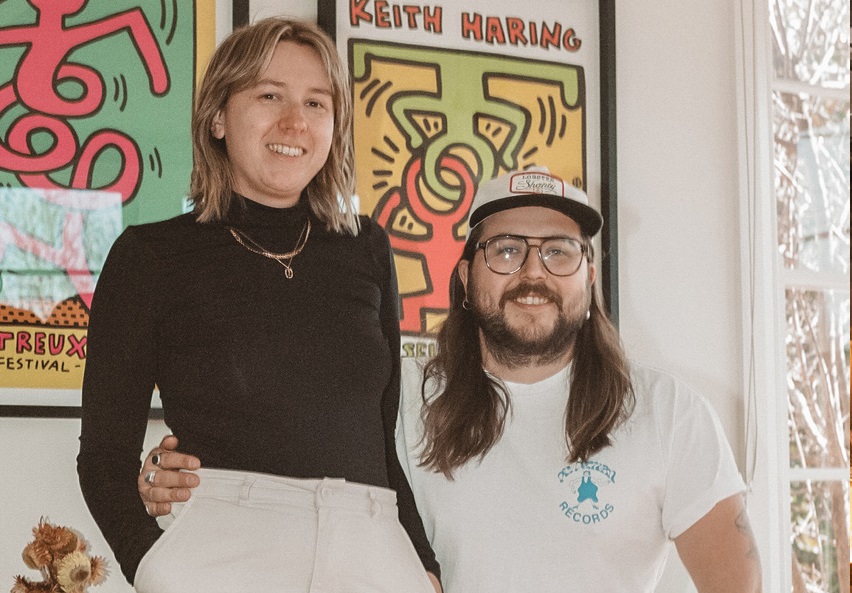Wine ferments and turns into vinegar if you leave it long enough. The pantry staple is known for its acidic properties, but there’s a spectrum of options beyond white, rice and balsamic.
Hugh Piper worked for the Love Tilly Group in Sydney for several years, with the chef making his first batch of vinegar from leftover wine at Dear Sainte Éloise. A one-off experiment would go on to turn into something much bigger — Very Molto.
Piper talks to Hospitality about working with by-products, understanding the scientific process of vinegar-making and the many culinary applications vinegars
can feature across.
Very Molto could be described as problem-solver or better yet, a waste-reducing brainwave. Former Dear Sainte Éloise head chef Hugh Piper would often be given leftover wine from the front-of-house team that would otherwise be poured down the sink.
“I’d always keep hold of it for cooking, but it got to the point where I was collecting a lot of wine and I wasn’t cooking with much of it,” he says. “I was like, ‘What can I do with all this wine?’ because I absolutely loathe throwing anything away, so I had the idea of making vinegar.”
The chef’s first attempt was a success and he decided to go bigger, producing larger quantities outside the kitchen with Condimental’s Cameron Stephens, who helped bottle the product. “I did another batch in 2020 called Cube’s Vinegar (that’s my nickname) and it had a ridiculous label with a sticker of my face made by a mate of mine years ago who did it as a joke.”
Label artwork aside, the vinegar started to gain traction among retailers and it was time to legitimise the product. Piper and his business partner and wife Zoe Morris
worked together to give the brand a new start. “Whenever we see something really
nice, we say, ‘It’s very molto’,” he says. “It’s always been a bit of joke between us and it just rolls off the tongue.”
Vinegar requires a level of scientific knowledge and a lot of patience to get right. “Vinegar is not the quickest thing to make,” says Piper. “It’s a slow process because it is all naturally fermented. It depends on the product and the time of year we are doing it; I’ve found two to three months is the average timeframe.”
Piper starts by combining wine or fruit with water and symbiotic culture of bacteria and yeast (SCOBY). “We’ve got some really gorgeous SCOBYs that are ginormous,” he says. “Once the product starts fermenting, the bacteria and yeast forms a rubbery, jelly-like disc that sits in there and ferments.”
The mixture is left at room temperature to allow the yeast and bacteria to activate. It’s a waiting game, and there has been plenty of trial and error along the way. “The bacteria don’t like it too cold,” says Piper. “It’s where we went wrong with our first batch. We put the vinegar in the shed and it was too cold.”
Piper and Morris relocated from Sydney to Orange and have since been sourcing leftover wine from local businesses. “I’m working with a restaurant here called The Union Bank,” says Piper. “I go and pick up any half to three-quarter bottles that have
been left for too long.”
The Very Molto range currently consists of two wine-based vinegars: Ramona and Rudy. Ramona is a mixture of Rosé, white and red wines, while Rudy is made from red wine. “Red and white wines have flavour profiles that carry through to the vinegar,” says Piper. “I wanted to have a few different options.”
But it’s not all about wine. A crowd favourite is Mandy, a fruit-based vinegar made from mandarins. “We bought some beautiful mandarins from the markets and naturally fermented them,” says Piper. “[Mandy] is bloody delicious, super bright and fruity, almost like sunshine in a bottle.”
There are numerous ways to use Very Molto’s vinegars from dressings to sauces as well as in cocktails. “The red wine vinegar works fantastically in a mignonette for oysters,” says Piper. “I really love the mandarin with raw fish; you just dress it with the vinegar and lots of olive oil, fennel and salt and pepper for a nice summery dish.”
The mandarin vinegar is also ideal to use to make drinks. “Fruit vinegars have a bit of sweetness and work really well as a shrub, which is sort of like a sour cordial,” says Piper. “You can put a little shot in a glass with some sparkling water or you can use it in a spritz.”
Very Molto is sold across Sydney and Melbourne at stockists and venues including Drnks, P&V Wine + Liquor Merchants, Odd Culture, Frank’s Deli, Ministry of Meat and more. The brand’s sustainable, no-waste approach has been a big part of its appeal. “A lot of places really like the idea that it is made from waste wine from the industry,” says Piper.
Very Molto has plans to evolve its range with new flavours and will continue working with local businesses to utilise leftover produce and wine. “There are so many orchards, growers and producers,” says Piper. “I’m really keen to get chatting to people and find the things they struggle to sell or that are leftover at the end of the season and try make products from produce that would otherwise go bad.”
The good thing about vinegar is that there’s a broad world to explore when it comes to what it is made from, with Piper tipping the launch of a blood orange product in the coming months.
Very Molto has been a natural next step for the chef, who’s putting his skills to good
use by launching a boutique brand that’s carving out its own place in a market that lauds products that provide a sustainable solution and taste damn good, too.

